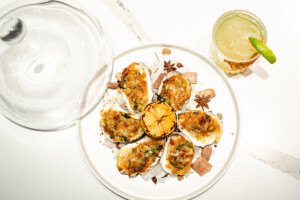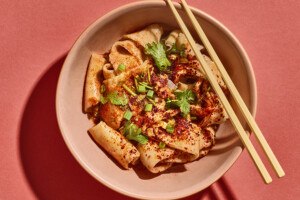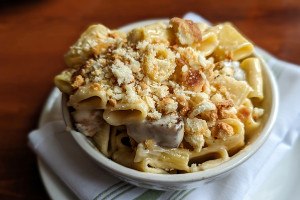With Takeout Food Taking Over, Can Fine Dining Survive the Pandemic in Boston?
Here's how high-end restaurants are handling an era made for home delivery and couch-friendly comfort foods.
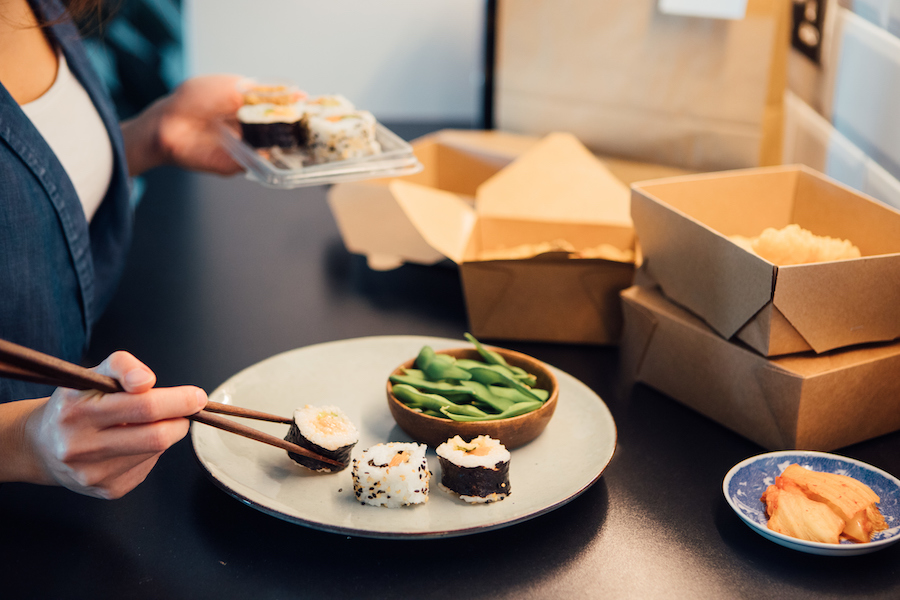
Photo via Getty.
Chris Coombs is an exceptional chef. He’s also an exception.
Ever since last March, when the pandemic (and the state’s regulatory responses to it) first put the kibosh on much indoor dining, most Boston restaurants have made takeout- and delivery-friendly food a priority in order to survive. Coombs, though, didn’t have the heart to depart from the fine French-American cuisine he loves to craft at Deuxave. His glittering Back Bay restaurant is still selling seared foie gras with kumquat confit and caramel marsala gastrique ($32) at a time when plenty of places are willing to sling as many satisfying meatball subs as they can to keep doors open.
“I’m a businessman, but with Deuxave, I really had to go with what was in my heart,” Coombs says. “I decided Deuxave was either going to succeed or fail as it was intended.” Although he now makes his unmodified, elegant-as-ever menus available for takeout (no delivery), he doesn’t even like to promote the option, since it gives him far less control over how his plates will look and taste by the time they’re consumed.
So far, Deuxave is still managing to “tread water,” says Coombs, though even that has required selling down the restaurant’s extensive vault of prized wines. Indeed, his uncompromising position is a bold one to take right now, when Boston’s fine dining institutions struggle to stay relevant—and profitable—in an era dominated by delivery and takeout fare. And it begs the question: Is there still room for haute cuisine when, at least for a while longer, most people will be eating it on their couch? For that matter, will there still be a strong market for fine dining when we wake up from our collective comfort-food coma?
As I speak to chefs, a cautious consensus is starting to emerge: While the pandemic economy may accelerate the industry’s move away from traditional fine dining in Boston, where white linens had already been disappearing from tabletops for years anyway, the demand for the category will never totally go away, they say.
“Over time it’ll eventually regulate itself, but I think once we first get back to normal, there will be a resurgence of fine dining,” says James Beard award winning chef Tony Messina of Back Bay’s swanky Uni. “People are willing to splurge on any experience that doesn’t involve them sitting at home.”
They’re actually willing to splurge, at least a bit, for at-home dining too: Uni’s takeout menu includes a $150 omakase and $100 sake flights. At the same time, Messina says you’ll soon find Uni tacos and street corn being sold out of a trailer at Northeastern University, an “approachable” format you might not have expected to see, pre-pandemic.
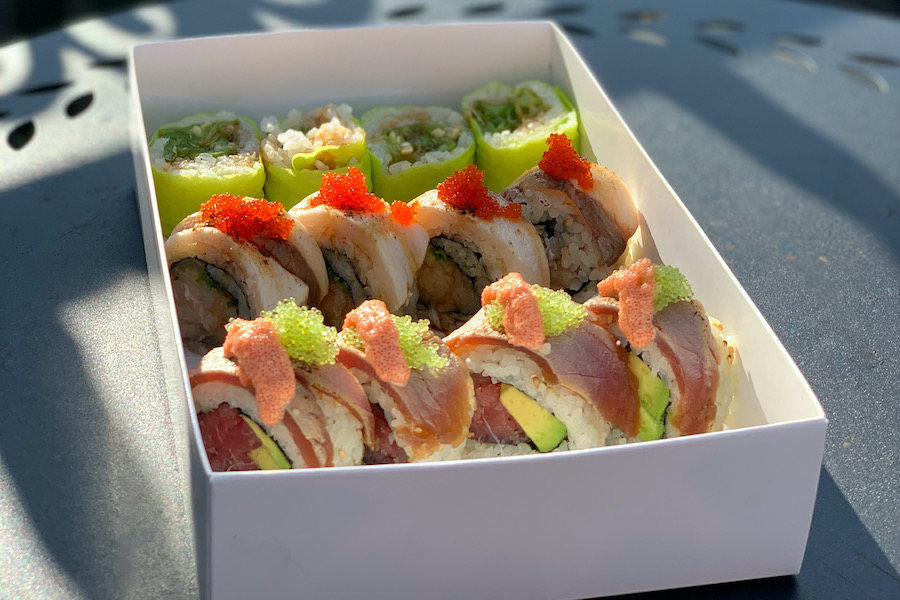
Uni takeout. / Courtesy photo
After all, with vaccinations still rolling out, fine dining restaurants are simply doing what it takes to reach the light at the end of the months-long tunnel. Of course, they’re taking a few different routes to get there: Some rare birds, like Deuxave, remain unwavering in their approach. Others have dialed back: See Beard winner Tony Maws’ Cambridge landmark Craigie on Main, which ditched its more refined, prix fixe menus for family-style takeout dinners of roasted chicken with sides, plus a few a la carte offerings like “four-chili chili fries.”
There are also plenty of restaurants that have simply entered so-called “hibernation” mode, shuttering their doors over the winter to avoid hemorrhaging operating costs and, hopefully, keep enough cash in the coffers to reopen for spring.
Those that remain open are doing their best to still convey high-end hospitality to diners at home. Uni, for instance, sends out 16-piece sushi sets in the kind of white cardboard boxes typically used for fancy chocolate assortments; inside, delicate arrangements of raw fish—dressed with dashi gelée, spicy squid emulsion, or cured roe—gleam like jewels. Meanwhile, Columbus Hospitality Group, the team behind several of Boston’s most popular upscale restaurants, employs its own “Butler Delivery Service” to usher around, say, the Burgundy-style escargot from its French restaurant Mistral.
All across the board, chefs are getting smarter about how to package their plates for takeout: separating sauces to keep things from getting soggy, including step-by-step reheating instructions—stuff like that. Now that they’ve got the systems down, many even say they’ll keep running takeout service even after dining rooms return to normal levels.
Beyond basic takeout, other fine dining restaurants are offering unique, boutique-y services. For instance, Somerville’s sophisticated, esoteric expo kitchen, Tasting Counter, has launched its TC@Home series: Customers receive prepared meal kits plus access to a chef-led Zoom call that guides them through the fun of final plating. Then there’s O Ya at Home, which makes the services of Boston’s gold-standard sushi legend available for private, at-home dinner parties with sake pairings.
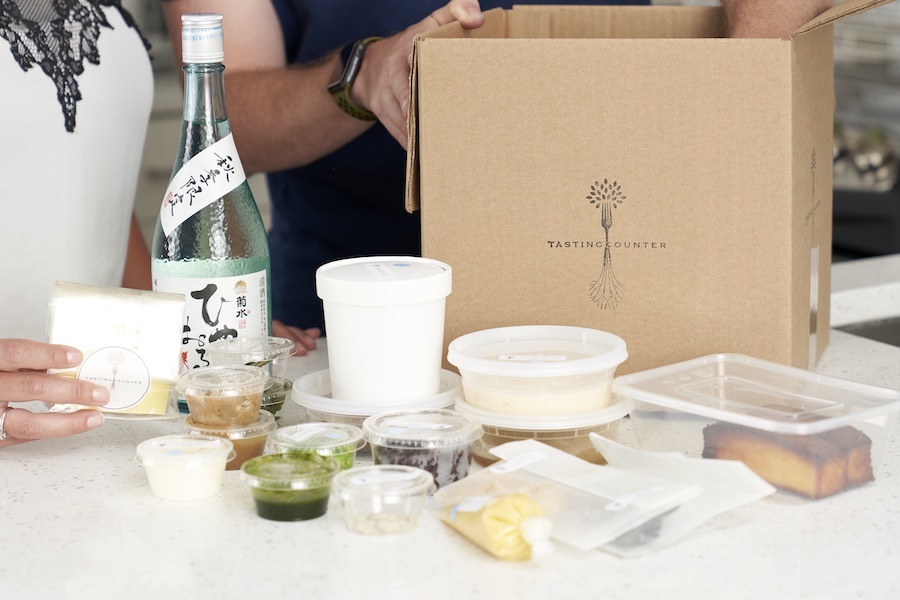
Tasting Counter, a fine dining restaurant in Somerville, offers at-home boxes of prepared meals. / Photo by Victor Janczar (Atwater Studios)
Fine dining is, after all, about food and hospitality. “Part of the allure is the excitement of feeling that you’re a part of something special. How do you convey that out of a takeout box?” says Charlie Foster of Woods Hill Pier 4, a chic farm-to-table that joined Boston’s Seaport district mere months before the pandemic arrived to quiet the bustling neighborhood’s buzz. For its part, besides selling organic meats and poultry from its own small, darling farm up in northern New Hampshire, Woods Hill Pier 4 occasionally offers unique to-go packages—say, a Valentine’s Day dinner for two—of mostly-cooked dinners for guests to finish off at home.
At the end of the day, chefs tell me, the goal of fine dining is simply to give guests a special meal. Manage that, and there’ll always be takers—even if they wind up taking it in front of the TV.
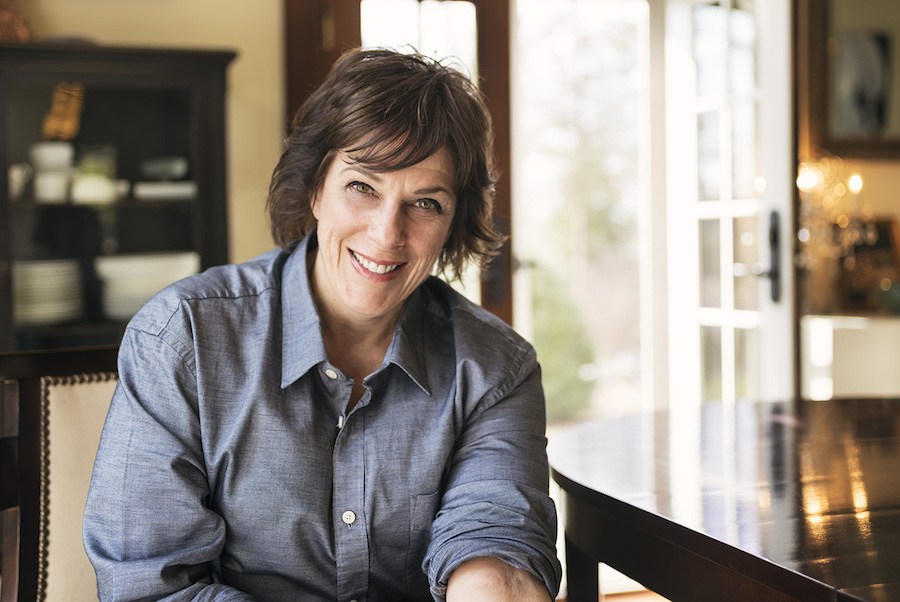
Barbara Lynch photo by Michael Prince / Barbara Lynch photo by Michael Prince provided
And when guests do return to restaurants in real numbers? Well, fine dining will probably be less about the lavish frills anyway, says nationally renowned restaurateur Barbara Lynch, veteran vanguard of Boston’s fine dining sphere. She was devastated when the pandemic first came along and kneecapped normal operations. But after a month-long break to rest and recalibrate, she’ll reopen her group of restaurants in February with an energized attitude and plans to evolve. Will she be offering takeout? Yes. How else will she transform for today’s fine-dining environment? She doesn’t have all the answers, she says, but she’s open to a lot of ideas—just as long as it all comes back to one thing: great food.
“It’s going to be back to the basics of giving people what they want,” says Lynch. Right now, that might not mean a dainty octopus salad, she says. But the most beautiful beef stew or expertly grilled fish they’ve ever had? Absolutely.
“The average person doesn’t know how to roast the perfect chicken, but we do,” Lynch explains. “Luxury doesn’t have to mean caviar. It’s about cooking brilliantly, and making you feel good.”
